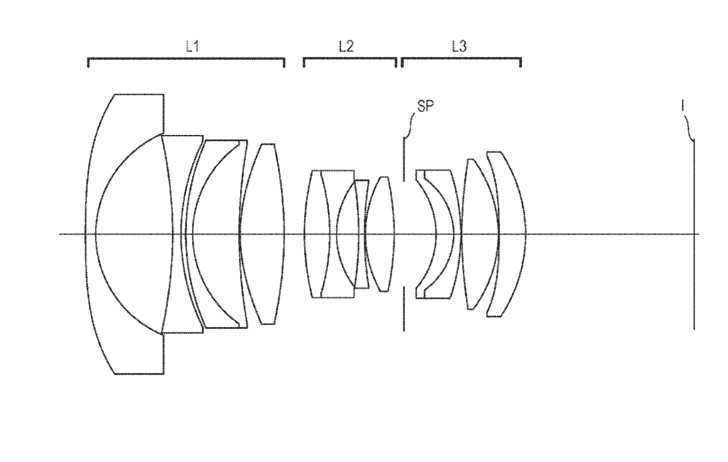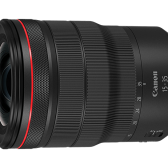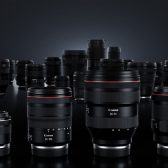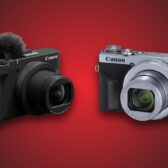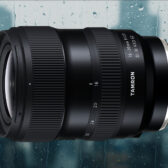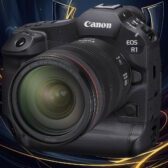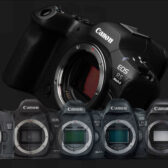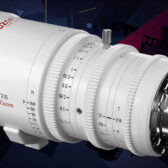Canon is full steam ahead as far as lens development goes, as a whole slew of optical formulas have appeared at patent offices.
These are the latest EF mount optical formulas. It’s possible that these are Cinema lenses as they appear to be close to parfocal.
Japan Patent Application 2019-066585
Canon EF 16mm f/1.4
- Focal distance 16.40mm 16.36mm 16.21mm
- F number 1.45 1.45 1.45
- Half field angle 52.84° 52.84° 52.84°
- Image height 21.64mm 21.64mm 21.64mm
- Whole length of the lens 98.97mm 98.65mm 97.42mm
- BF 38.50mm 38.83mm 40.05mm
Canon EF 20mm f/1.4
- Focal distance 20.50mm 20.45mm 20.26mm
- F number 1.45 1.45 1.45
- Half field angle 46.54° 46.54° 46.54°
- Image height 21.64mm 21.64mm 21.64mm
- Whole length of the lens 100.04 99.55 97.71
- BF 38.32mm 38.81mm 40.64mm
Canon EF 14mm f/1.8
- Focal distance 14.40mm 14.38mm14.29mm
- F number 1.83 1.83 1.83
- Half field angle 56.35° 56.35° 56.35°
- Image height 21.64mm 21.64mm 21.64mm
- Whole length of the lens 88.57mm 88.32mm 87.42mm
- BF 38.79mm 39.04mm 39.94mm
Canon 16mm f/1.8
- Focal distance 16.04mm 16.00mm 15.86mm
- F number 1.83 1.83 1.83
- Half field angle 53.45° 53.45° 53.45°
- Image height 21.64mm 21.64mm 21.64mm
- Whole length of the lens 94.99 94.67 93.46
- BF 38.80mm 39.13mm 40.33mm
Canon EF 17mm f/1.8
- Focal distance 17.16mm 17.14mm 17.06mm
- F number 1.83 1.83 1.83
- Half field angle 51.58° 51.58° 51.58°
- Image height 21.64mm 21.64mm 21.64mm
- Whole length of the lens 90.00mm 89.66mm 88.39mm
- BF 40.51mm 40.86mm 42.12mm
Canon 18mm f/1.8
- Focal distance 18.81mm 18.75mm 18.52mm
- F number 1.83 1.83 1.83
- Half field angle 48.99° 48.99° 48.99°
- Image height 21.64mm 21.64mm 21.64mm
- Whole length of the lens 93.37mm 93.37mm 93.37mm
- BF 39.52mm 39.52mm 39.52mm
Japan Patent Application 2019-066586
Canon EF 18mm f/1.4
- Focal distance 18.52mm 18.46mm 18.25mm
- F number 1.31 1.31 1.31
- Half field angle 49.44° 49.53° 49.85°
- Image height 21.64mm 21.64mm 21.64mm
- Whole length of the lens 106.98mm 106.51mm 104.95mm
- BF 38.97mm 39.44mm 41.00mm
Canon EF 20mm f/1.4
- Focal distance 20.50mm 20.45mm 20.26mm
- F number 1.45 1.45 1.45
- Half field angle 46.54° 46.54° 46.54°
- Image height 21.64mm 21.64mm 21.64mm
- Whole length of the lens 100.04mm 99.55mm 97.71mm
- BF 38.32mm 38.81mm 40.65mm
Canon EF 14mm f/1.8
- Focal distance 14.69mm 14.68mm 14.64mm
- F number 1.85 1.85 1.85
- Half field angle 55.82° 55.85° 55.91°
- Image height 21.64mm 21.64mm 21.64mm
- Whole length of the lens 104.15mm 103.78mm 102.95mm
- BF 38.33mm 38.70mm 39.53mm
Canon EF 22mm f/1.2
- Focal distance 22.6mm 22.60mm 22.20mm
- F number 1.24 1.24 1.25
- Half field angle 43.63° 43.75° 44.27°
- Image height 21.64mm 21.64mm 21.64mm
- Whole length of the lens 107.46mm 106.9mm 104.5mm
- BF 38.32mm 38.88mm 41.28mm
Canon EF 24mm f/1.2
- Focal distance 24.10mm 24.03mm 23.69mm
- F number 1.24 1.24 1.24
- Half field angle 41.92° 42.00° 42.40°
- Image height 21.64mm 21.64mm 21.64mm
- Whole length of the lens 108.28mm 107.72mm 104.96mm
- BF 38.33mm 38.89mm 41.65mm
|
When you purchase through links on our site, we may earn an affiliate commission. Here's how it works. |


